“Tri-in-One” Accumulation Model of Lithologic Reservoirs in Continental Downfaulted Basins: A Case Study of the Lithologic Reservoir of Nantun Formation in Tanan Sag, Mongolia
Abstract
:1. Introduction
2. Connotations of the “Tri-in-One” Hydrocarbon Accumulation Model
2.1. Connotation of “Fracture Set”
2.2. Connotation of “Tri”
3. Control of Fault Combination, Sandbody Type, Effective Source Rock, and Effective Reservoir on Oil and Gas
3.1. Sandstone–Mudstone Combination Optimization and Lithologic Reservoir Distribution Controlled by Fracture Set
3.2. Lithologic Reservoir Distribution Controlled by Sandbody Type
- (1)
- Sand-control effects of basin margin gully and fault slope.
- (2)
- The Control Effect of Sandstone Types on Lithological Oil Reservoirs.
3.3. Lithologic Reservoir Size Is Controlled by Effective Source Rock
3.4. Hydrocarbon Enrichment Degree Controlled by Effective Reservoirs
- (1)
- Impacts of reservoir physical properties on lithologic reservoir accumulation.
- (2)
- Impacts of reservoir shale content on lithologic reservoir accumulation.
4. Discussion
5. Conclusions
- (1)
- Through detailed analysis of structural characteristics, sedimentary evolution, sedimentary facies type, source rock characteristics, and reservoir characteristics of lithologic reservoirs in the Nantun Formation of the Tanan Sag, combined with years of work experience, three main controlling factors of sandbody type, effective source rock, and effective reservoir, as well as a “Tri-in-one” reservoir forming model of coupling factors, are summarized. Fractures and their combinations not only control reservoir distribution, but are also closely related to source rock development and lithologic trap distribution. When time–space relationships between fault development and reservoir formation processes are good, oil and gas accumulation is abundant. Under the effect of fractures, the best spatial relationship constitutes sandbodies, dark mudstones, effective reservoirs, and coupled hydrocarbon reservoirs. As a typical continental downfaulted lake basin, Tanan sag has many contemporaneous fractures, as well as the “gully source control, fault-break sand control” basining characters, which are determined by synsedimentary fractures and their configurations. These fractures control of sandbody distribution. On the hanging wall and foot wall, dark mudstone and sandstone are connected within the hydrocarbon expulsion threshold; thus, a “Tri-in-one” configuration is formed among lithosome, source rock, and reservoir.
- (2)
- Structural factors and sedimentary environment of lithologic reservoir can influence hydrocarbon accumulation and reservoir formation. Affected by sedimentary actions, abundant hydrocarbons only accumulate in traps formed by certain sandbody types under particular geological conditions. Lower parts of various slope break zones, nearshore subaqueous fans, fan delta sandbodies, and turbidite sandbodies in Tanan sag have good chances of forming lithologic traps.
- (3)
- With the increase in depth, sufficient hydrocarbon is generated in source rock under thermal evolution. Hydrocarbon generation and expulsion are more intensive when it comes to the depth threshold and critical conditions of hydrocarbon supplying are met. Traps that are surrounded or are in contact with source rock, or communicated by faults, can form reservoirs. As the buried depth increases, the intensity of hydrocarbon generation–expulsion grows and the trap is more petroliferous.
- (4)
- Hydrocarbon accumulation and reservoir formation are also controlled by sandbody accumulation conditions. When the critical conditions of hydrocarbon generation and concrete are met, oil and gas are charged in; better physical properties of the sandbody always indicate more hydrocarbon accumulation in the trap.
Author Contributions
Funding
Data Availability Statement
Conflicts of Interest
References
- Liu, Z.; Chen, Y.P.; Zhao, Y.; Hao, Q.; Xu, X.M.; Chang, M. Distribution and controlling factors of hydrocarbon reservoirs in continental downfaulted basins. Lithol. Reserv. 2007, 19, 121–127. (In Chinese) [Google Scholar]
- Li, P.L. Zonary distribution of hydrocarbon in oil enriched rifted basins and exploration direction in the Huimin sag. Pet. Exp. Geol. 2001, 23, 146–148. (In Chinese) [Google Scholar]
- Zhang, Y.F. Modelling Experiments of Lithologic Reservoirs Formation in Source Rocks and Its Accumulation Mechanism Analysis. Lab. Res. Explor. 2001, 20, 103–106. (In Chinese) [Google Scholar]
- Zhao, W.Z.; He, D.F.; Chi, Y.L.; Lei, Z.Y.; Qu, H. Major characteristics and exploration technology of muti-source petroleum systems in China. J. Pet. 2001, 22, 6–13. (In Chinese) [Google Scholar]
- Gao, X. Analysis of ridge fault circle coupling reservoir control in Huizhou Sag of the Pearl River Mouth Basin. Contemp. Chem. Res. 2023, 6, 55–57. (In Chinese) [Google Scholar] [CrossRef]
- Tang, Y.; Ji, J.; Guo, W.J.; Chen, H.; Li, Y.Y.; Dong, F. Structural characteristics and reservoir control of Middle/Upper Permian unconformity in the east of Fukang Sag, the Junggar Basin. Pet. Geophys. Explor. 2022, 57, 1138–1147+1005. (In Chinese) [Google Scholar] [CrossRef]
- Chen, S.G.; Zhu, Q.Z.; Zhang, R.F.; Liu, X.H.; Wang, S.C.; Tian, N.; Zhang, X.M.; Wang, J.G.; Liang, Q.J. Formation, evolution, and reservoir control of the Jilantai tectonic belt in the Hetao Basin. J. Chengdu Univ. Technol. Nat. Sci. Ed. 2022, 49, 533–541. (In Chinese) [Google Scholar]
- Bao, H.P.; He, D.F.; Wang, Q.P.; Zhang, L.; Zhang, J.W.; Yan, T.; Yan, W. Four main palettes evolution in Ordos Basin and their differences in significance of oil and gas reserve control. J. Paleogeogr. 2022, 24, 951–969. (In Chinese) [Google Scholar]
- Sun, X.D.; Xiao, W.H.; Bai, J.; Zhang, Y.C.; Yuan, Y.C.; Chen, S. Characteristics and reservoir-controlling effect of the Kulongshan buried structure. Pet. Geophys. Explor. 2022, 57, 236–242+19. (In Chinese) [Google Scholar]
- Wang, X. Characteristics of the strike-slip faults in Jinghe Chang 8 reservoir and their influence on hydrocarbon accumulation. Petrochem. Appl. 2021, 40, 101–105. (In Chinese) [Google Scholar]
- Liu, L. Study on the Deformation Mechanism of Strike Slip Oblique Extension Faults and Their Control on Oil and Gas Accumulation in Penglai 25–31 Block in the Bohai Sea. Ph.D. Thesis, Northeast Petroleum University, Daqing, China, 2022. (In Chinese). [Google Scholar] [CrossRef]
- Martirosyan, A.V.; Martirosyan, K.V.; Mir-Amal, A.M.; Chernyshev, A.B. Assessment of a Hydrogeological Object’s Distributed Control System Stability. In Proceedings of the 2022 Conference of Russian Young Researchers in Electrical and Electronic Engineering (ElConRus), Saint Petersburg, Russia, 25–28 January 2022; pp. 768–771. [Google Scholar] [CrossRef]
- Guo, H.Y. The Control of the Qinan Fault on the Formation of Oil and Gas Reservoirs in the Lower Shale Formation. Ph.D. Thesis, Northeast Petroleum University, Daqing, China, 2021. (In Chinese). [Google Scholar]
- Du, X.D.; Peng, G.R.; Wu, J.; Zhang, Z.W.; Xu, X.M.; Zhu, D.W. Characteristics of Yangjiang East Depression Fault in the Pearl River Mouth Basin and Its Impact on Oil and Gas Accumulation. Xinjiang Pet. Geol. 2020, 41, 414–421. (In Chinese) [Google Scholar]
- Ma, Z.Z. Study on the Characteristics and Main Controlling factors of Oil and Gas Accumulation in the Kong2 Member of the Cangdong Depression. Ph.D. Thesis, China University of Petroleum (Beijing), Beijing, China, 2020. (In Chinese). [Google Scholar] [CrossRef]
- Wang, Y.F. Source Control of Oil and Gas Accumulation in Qikou Depression. Ph.D. Thesis, China University of Petroleum (Beijing), Beijing, China, 2020. (In Chinese). [Google Scholar] [CrossRef]
- Luo, Q.; Hong, L.; Gao, Y.; Deng, Y.; Li, Y.Y.; Wang, S.C.; Ma, W.Y.; Xu, Q. Differential enrichment mechanism and reservoir control model of tight oil source reservoir associations: A case study of Qingxi Depression in Jiuquan Basin. Pet. Exp. Geol. 2023, 45, 1–10+19. (In Chinese) [Google Scholar]
- Jia, X.L.; Yao, Z.S.; Xu, X.J. Analysis of Controlling factors for Jurassic Tight Sandstone Gas Reservoirs in Qiudong Depression. In Proceedings of the 2022 International Conference on Oil and Gas Field Exploration and Development III, Urumqi, China, 16–18 August 2022; pp. 404–413. (In Chinese). [Google Scholar]
- Zhao, Z.L.; Zhao, J.Z.; Er, C. A Method for Judging the Control of Transportation and Reservoir by Combining Fault Sand Cover Elements. CN114624786A, 14 June 2022. (In Chinese). [Google Scholar]
- Wang, Q.H.; Chen, Y.Q.P.; Hu, F.J. Lower Paleozoic carbonate cap rocks and their reservoir control in the Tarim Basin: A case study of the Tarim Platform. Nat. Gas Geosci. 2023, 34, 1–14. (In Chinese) [Google Scholar]
- Zhang, W.G. Study on reservoir characteristics and main controlling factors of reservoir formation in the middle and lower part of the Yanchang Formation in the southeastern Tiebiancheng Block of Jiyuan Oilfield. Ph.D. Thesis, Northwest University, Xi’an, China, 2020. (In Chinese). [Google Scholar] [CrossRef]
- Dong, C.Y.; Liu, Z.; Liu, Q.D.; Luo, B.W.; Li, C.H.; Wang, W.J. Study on the Fault Lithological Reservoir Formation System and Main Controlling factors of the Dainan Formation in Gaoyou Depression. Pet. Exp. Geol. 2013, 35, 395–400. (In Chinese) [Google Scholar]
- Li, Q.; Miao, H.; Li, L.; Wang, L. Gas accumulation characteristics and main controlling factors of deep clastic rock in Changling fault depression in southern Songliao Basin. China Pet. Explor. 2009, 14, 34–39+9. (In Chinese) [Google Scholar]
- Yang, Y. High yield law of shale oil enrichment in Jiyang continental downfaulted basin. Oil Gas Geol. Recovery 2023, 30, 1–20. (In Chinese) [Google Scholar] [CrossRef]
- Zhang, S.C.; Wang, X.J.; Wang, X.H.; Zhu, R.F.; Qiu, Y.B. Differences and characterization of reservoir forming fluid dynamics in continental downfaulted basins. Pet. Exp. Geol. 2022, 44, 941–949. (In Chinese) [Google Scholar]
- Zhou, Q. Characteristics and classification of tight oil reservoirs in continental downfaulted basins. Geol. Resour. 2019, 28, 30–34. (In Chinese) [Google Scholar] [CrossRef]
- Sun, X.D.; Wu, C.L.; Sui, Z.Q.; Mao, X.P. Simulation of oil and gas migration and accumulation based on continental downfaulted basins. J. Xi’an Pet. Univ. Nat. Sci. Ed. 2015, 30, 1–6+112. (In Chinese) [Google Scholar]
- Cao, Y.C.; Chen, L.; Kang, X.W.; Gao, Z.S. Slope break zone theory and exploration overview of subtle oil and gas reservoirs in continental downfaulted basins. Shaanxi Coal 2014, 33, 47–50+28. (In Chinese) [Google Scholar]
- Song, L.; Zhang, Y.G.; Mou, M.; Wang, N.; Zhang, X.J.; Zhang, E. Oil and gas migration and accumulation under overpressure systems in continental downfaulted basins: Taking the Chexi area of Chezhen depression as an example. Oil Gas Geol. Recovery Rate 2014, 21, 28–32+112–113. (In Chinese) [Google Scholar] [CrossRef]
- Martirosyan, A.V.; Ilyushin, Y.V. Modeling of the Natural Objects’ Temperature Field Distribution Using a Supercomputer. Informatics 2022, 9, 62. [Google Scholar] [CrossRef]
- Di, L.J. Controlling of petrophysical fractures on extra-low permeability oil and gas reservoirs in Ordos Basin. Pet. Explor. Dev. 2006, 33, 667–670. (In Chinese) [Google Scholar]
- Luo, Q. Concept, principle, model and significance of the fault controlling hydrocarbon theory. Pet. Explor. Dev. 2010, 37, 316–328. (In Chinese) [Google Scholar]
- Tong, C.G. Some characteristics of petroleum geology of the rift systemin eastern China. Acta Pet. Sin. 1980, 1, 44–49. (In Chinese) [Google Scholar]
- Luo, Z.L.; Liu, S.G. Plate Tectonics and Petroliferous Basins in China; China University of Geosciences Press: Wuhan, China, 1989; pp. 15–54. (In Chinese) [Google Scholar]
- Zhang, J.F.; Lan, C.L. Fractures and faults distribution and its effect on gas enrichment areas in Ordos Basin. Pet. Explor. Dev. 2006, 33, 172–177. (In Chinese) [Google Scholar]
- Dong, Y.X.; Wang, Z.C.; Zheng, H.J.; Xu, A.N. Control of strike-slip faulting on reservoir formation of oil and gas in Nanpusag. Pet. Explor. Dev. 2008, 35, 424–430. (In Chinese) [Google Scholar] [CrossRef]
- Li, J.M. Fault System and Its Control on Oil-Water Relationship of Development Block in Haita Basin. Ph.D. Thesis, Northeast Petroleum University, Daqing, China, 2010; pp. 49–50. (In Chinese). [Google Scholar]
- Gu, S.S.; Xu, W. Discussion on the article of “Application of fault control hydrocarbon theory to realize a greatbreakthrough of petroleum exploration in Qaidam Basin”. Acta Pet. Sin. 2003, 24, 107–108. (In Chinese) [Google Scholar]
- Luo, Q. Fault Controlling Hydrocarbon Theory and It’s Application in Baitang Depression in Bohai Gulf Coastal Basin and Qaidam Basin. Ph.D. Thesis, PetroChina Research Institute of Petroleum Exploration and Development, Beijing, China, 2001; pp. 9–11. (In Chinese). [Google Scholar]
- Wang, Z.C.; Zhao, W.Z.; Li, Z.Y.; Jiang, X.F.; Li, J. Role of basement faults in gas accumulation of Xujiahe Formation, Sichuan Basin. Pet. Explor. Dev. 2008, 35, 541–547. (In Chinese) [Google Scholar] [CrossRef]
- Fu, G.; Lei, L. Research on Differences of Controlling of Fault to Oil Accumulation in and outside Oil Source Area. Geol. Rev. 2010, 56, 719–725. (In Chinese) [Google Scholar]
- Hooper, E. Fluid migration along growth fault in compacting sediments. J. Pet. Gevlogg 1991, 14, 160–190. [Google Scholar] [CrossRef]
- Zhou, H.Y.; Lu, J.F. Faults: A key factor for expelling low mature oil. J. Jian Han Pet. Inst. 1998, 20, 27–33. (In Chinese) [Google Scholar]
- Yi, S.W. ExPloration Theory and Practice of Lithologic and StratigraPhic Reservoirs in Erlian Basin. Ph.D. Thesis, Chengdu University of Technology, Chengdu, China, 2006; p. 53. (In Chinese). [Google Scholar]
- Wang, J.Q. The chimney effects of hydrocarbon activity. Exp. Pet. Geol. 1997, 19, 193–199. (In Chinese) [Google Scholar]
- Zeng, J.H.; Jin, Z.J. Physical Modeling of Secondary Oil Migration and Accumulation; Petroleum Industry Press: Beijing, China, 2000; pp. 121–179. (In Chinese) [Google Scholar]
- Chen, D.X.; Pang, X.Q.; Weng, Q.P.; Jiang, Z.X.; Zhang, J. Discussion and preliminary application of ternary genetic mechanism of lithologic reservoir. Oil Gas Geol. 2003, 24, 228–232. (In Chinese) [Google Scholar]
- Simnovich, B.B.; Liu, S.X.; Xu, S.B. None-Anticline Reserviors; Petroleum Industry Press: Beijing, China, 1986. [Google Scholar]
- Zhao, C.L.; Zhang, S.W.; Yuan, J. Depositional Reservoir and Hydrocarbon of Shengli oil Region; Petroleum Industry Press: Beijing, China, 1999; pp. 95–96. (In Chinese) [Google Scholar]
- Hao, F.; Zou, H.Y.; Jiang, J.Q. Dynamics of petroleum accumulation and its advances. Earth Sci. Front. 2000, 7, 11–21. (In Chinese) [Google Scholar]
- Du, J.H. Analysis of Natural Gas Accumulation Conditions and Exploration Prospects in the Central Paleouplift Belt (North), Songliao Basin. China Pet. Explor. 2017, 22, 1–14. [Google Scholar]
- Wu, L.; Zhang, J. Characteristics of effective source rocks of Paleogene in Jiyang Depression. Geogr. Res. Bull. 2022, 1, 56–62. [Google Scholar]
- Zhong, S.H.; Yuan, L.; Zhang, R.X.; Yan, C.P.; Cao, Y.; He, T.T. Identification and effectiveness evaluation of fractures in calcareous sandstone reservoirs in Northeast Sichuan. Complex Oil Gas Reserv. 2022, 15, 23–29. [Google Scholar]
- Sun, T.W.; Wang, F.; Wang, Y.G.; Li, J.H.; Hu, M.; Ouyang, J.T.; Li, M. Types of fault sand body assemblages and differential enrichment mechanisms of oil and gas in the Nantun Formation in the southwestern region of the Hailar Basin. Daqing Pet. Geol. Dev. 2023, 42, 40–49. [Google Scholar]
- Li, G. Characteristics of the faul-sand configuration conducting system and their differences in the oil-gas control between sag area and slope area. Pet. Geol. Oifield Dev. Daqing 2022, 41, 36–42. [Google Scholar]
- Cui, X.; Jiang, H.F.; Wang, Y.Z. Control factorsand accumulation modes of central uplift belt in Beier Sag, Hailar Basin. Fault-Block Oil Gas Field 2018, 25, 555–558. [Google Scholar]
- LI, T.T.; Deng, H.; Zou, W.Q. Accumulation conditions and hydrocarbon enrichment laws of low-permeabilty oil reservoirs in complex rift basins A case study from the second member of Nantun Formation of Beizhong sub-sag in Beier Sag of Hailar Basin. Pet. Geol. Ollfield Dev. Daqing 2021, 40, 32–37. [Google Scholar]
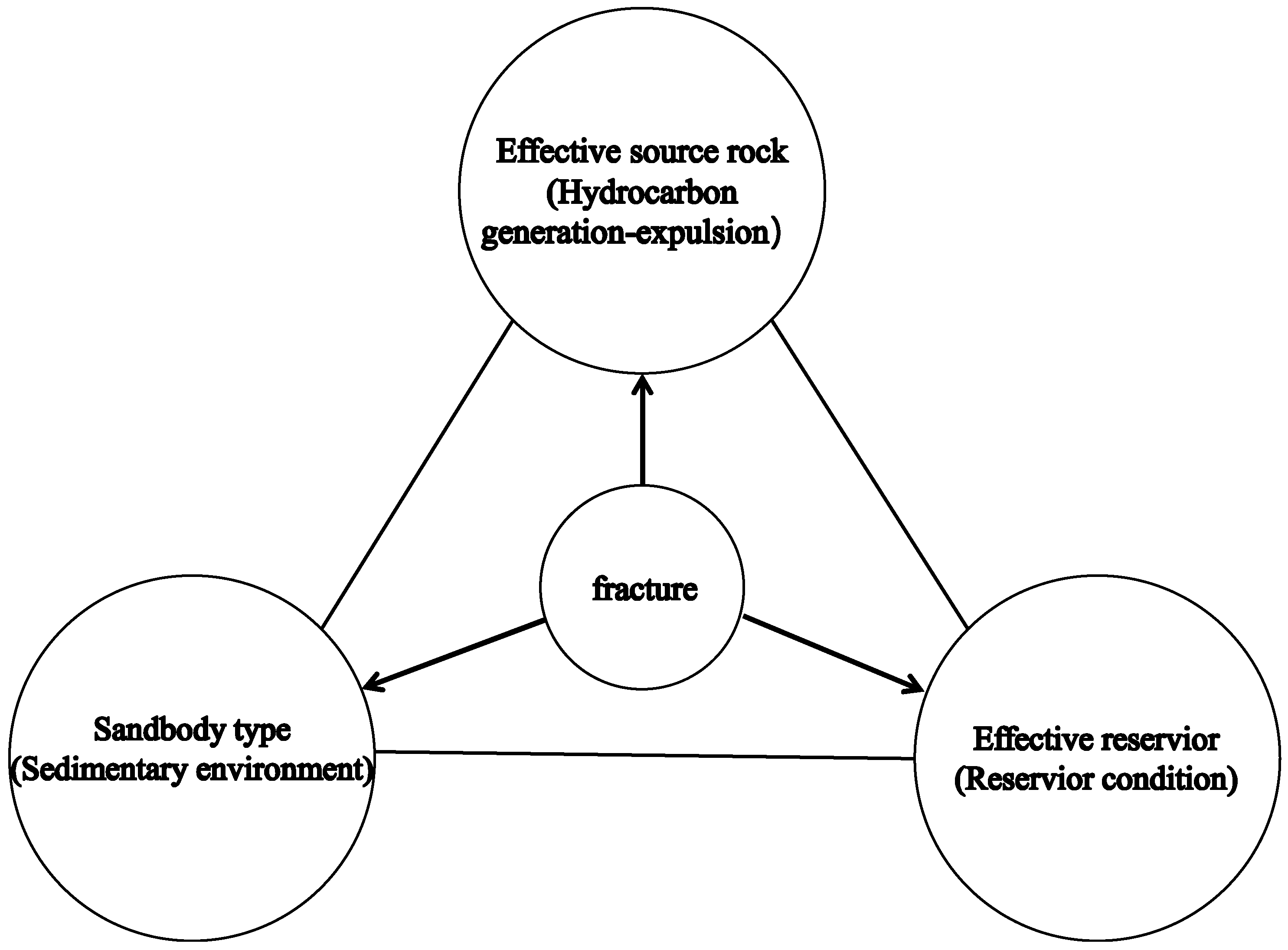
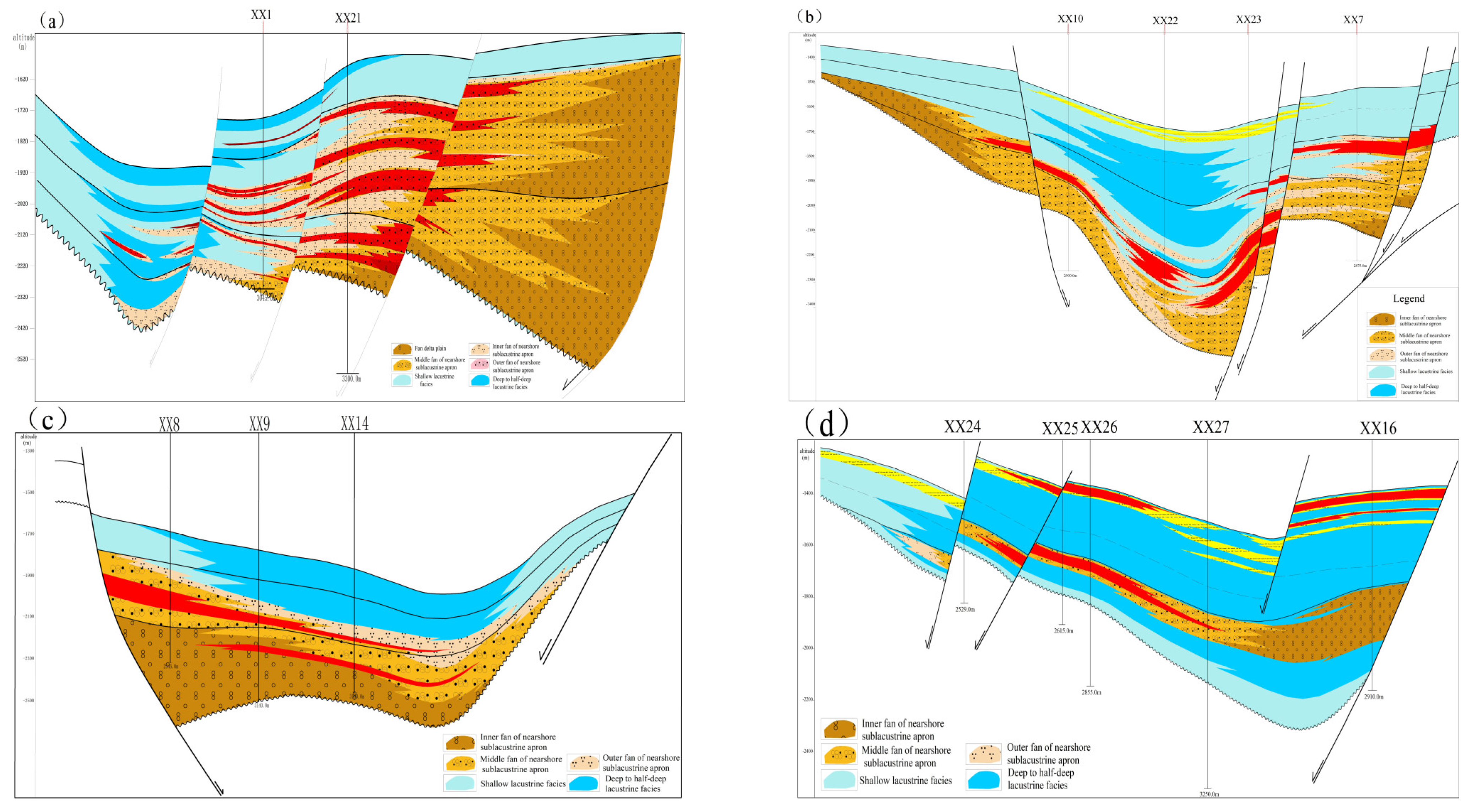
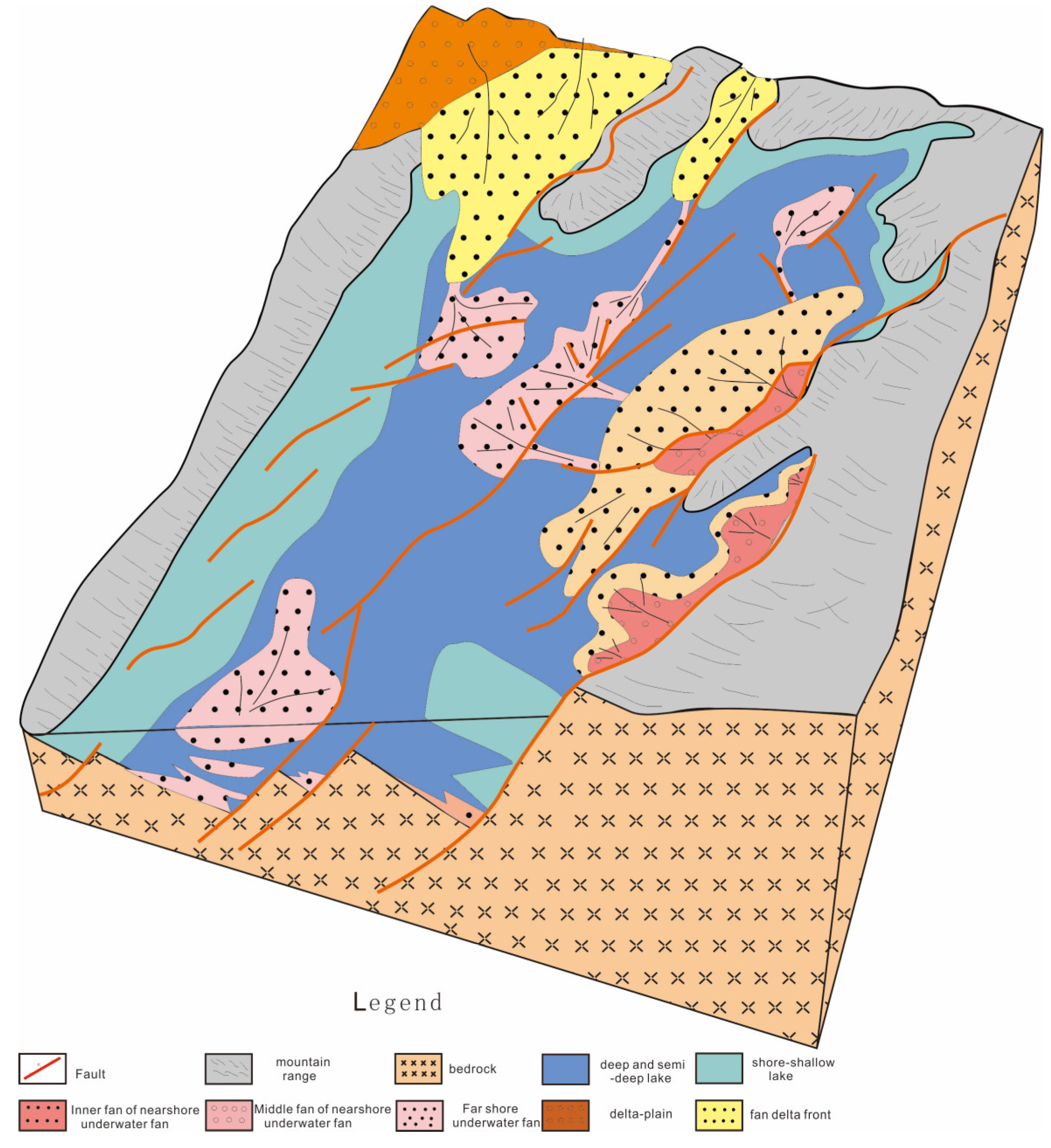
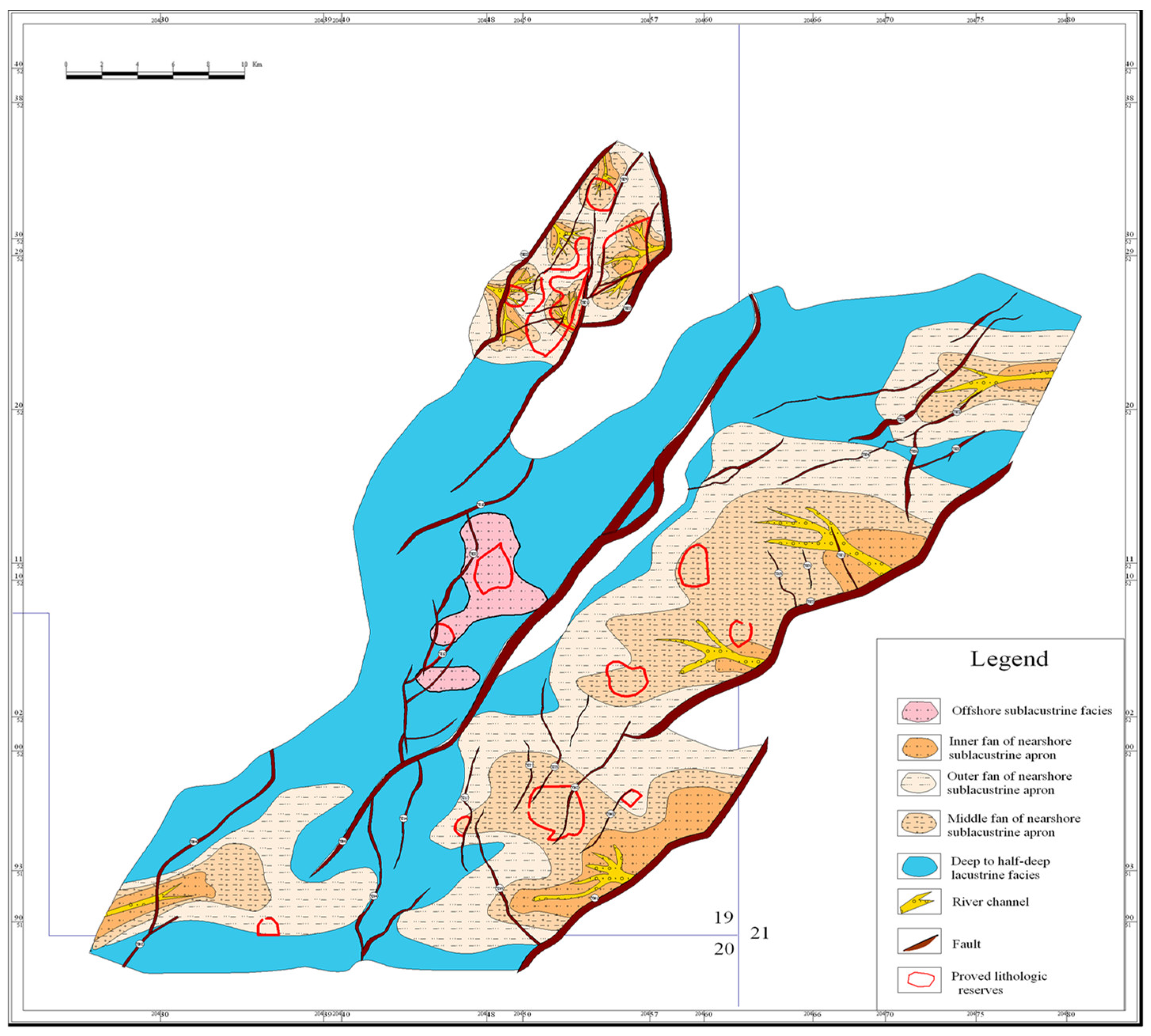
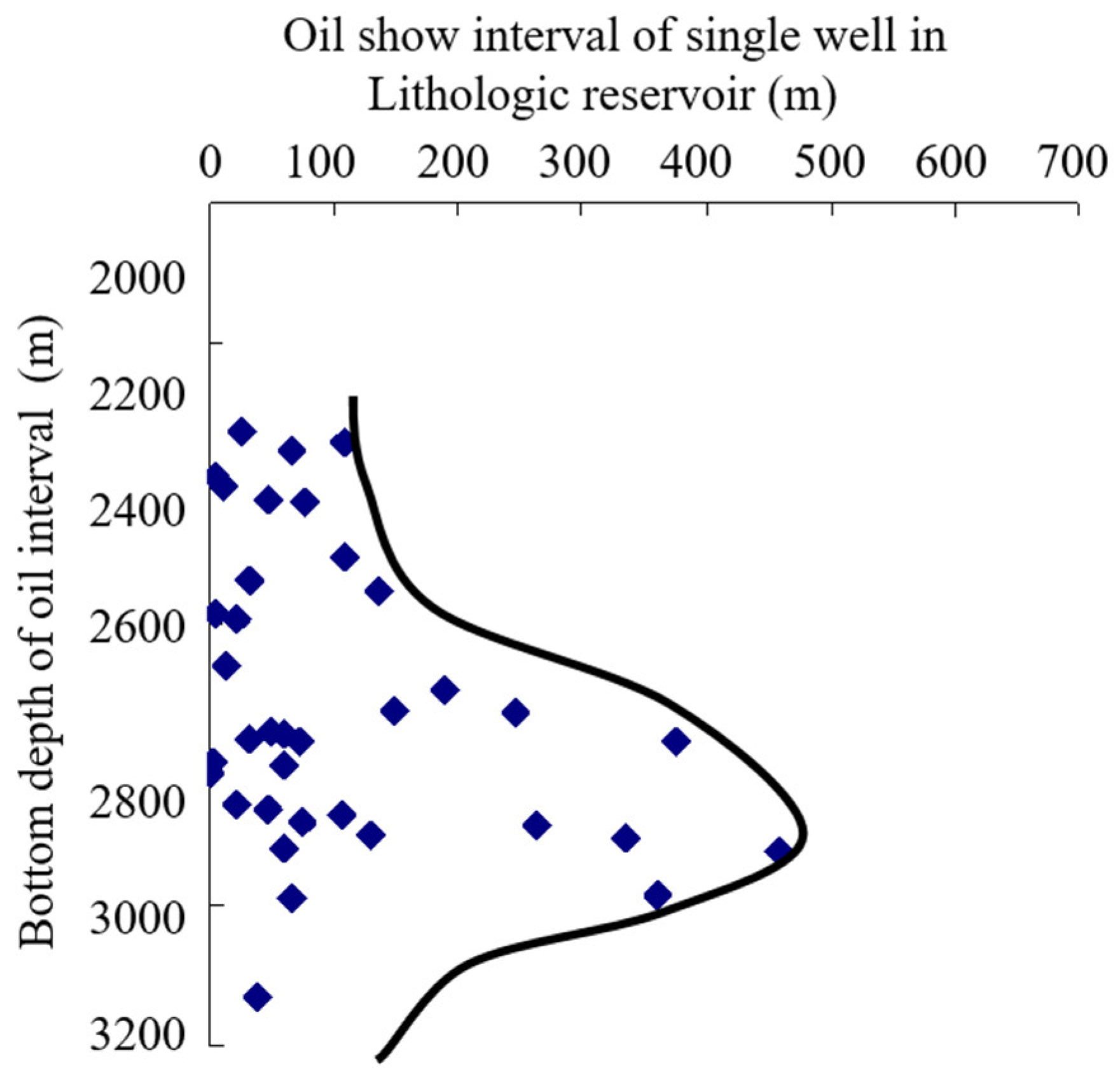
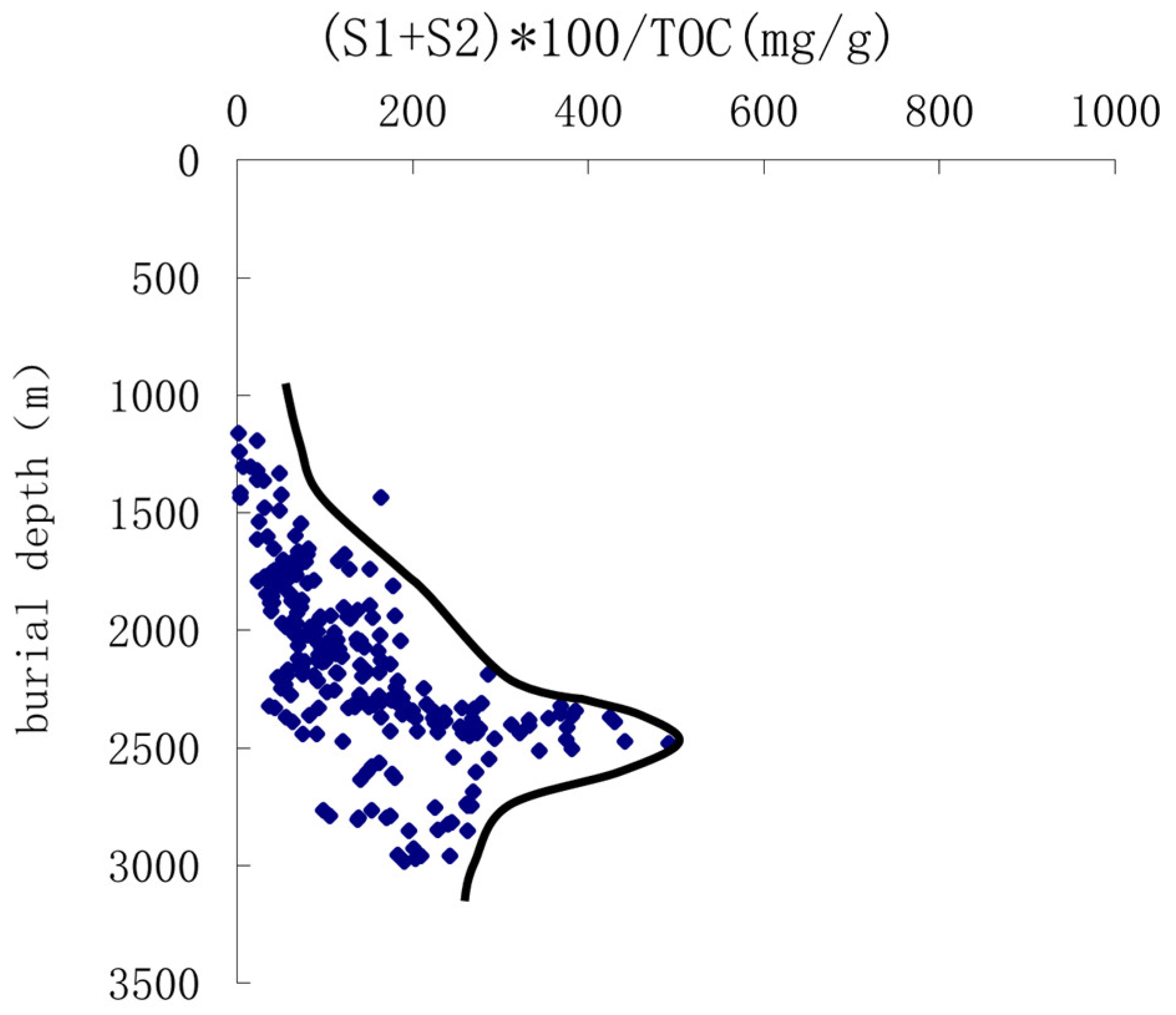
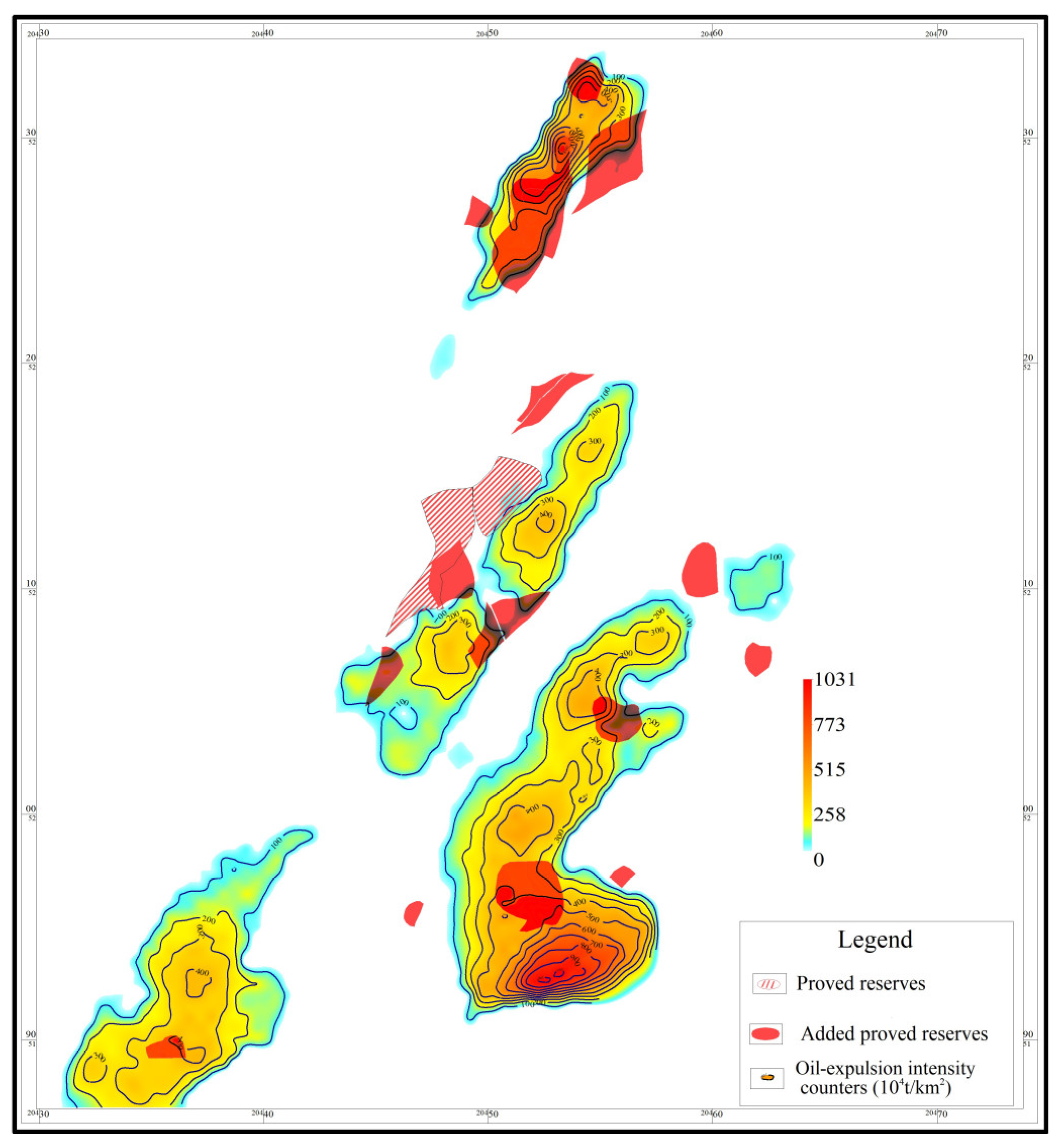
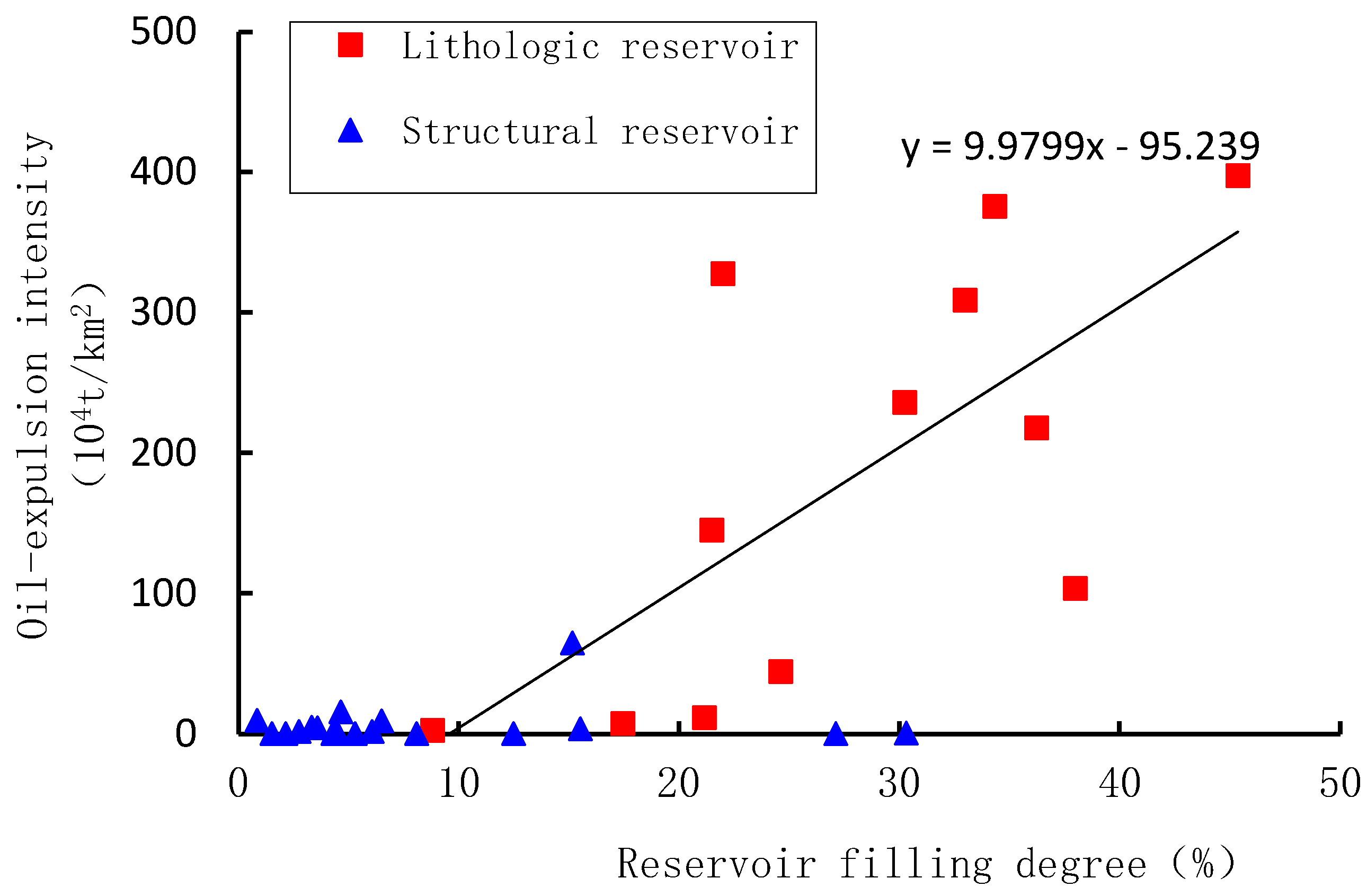
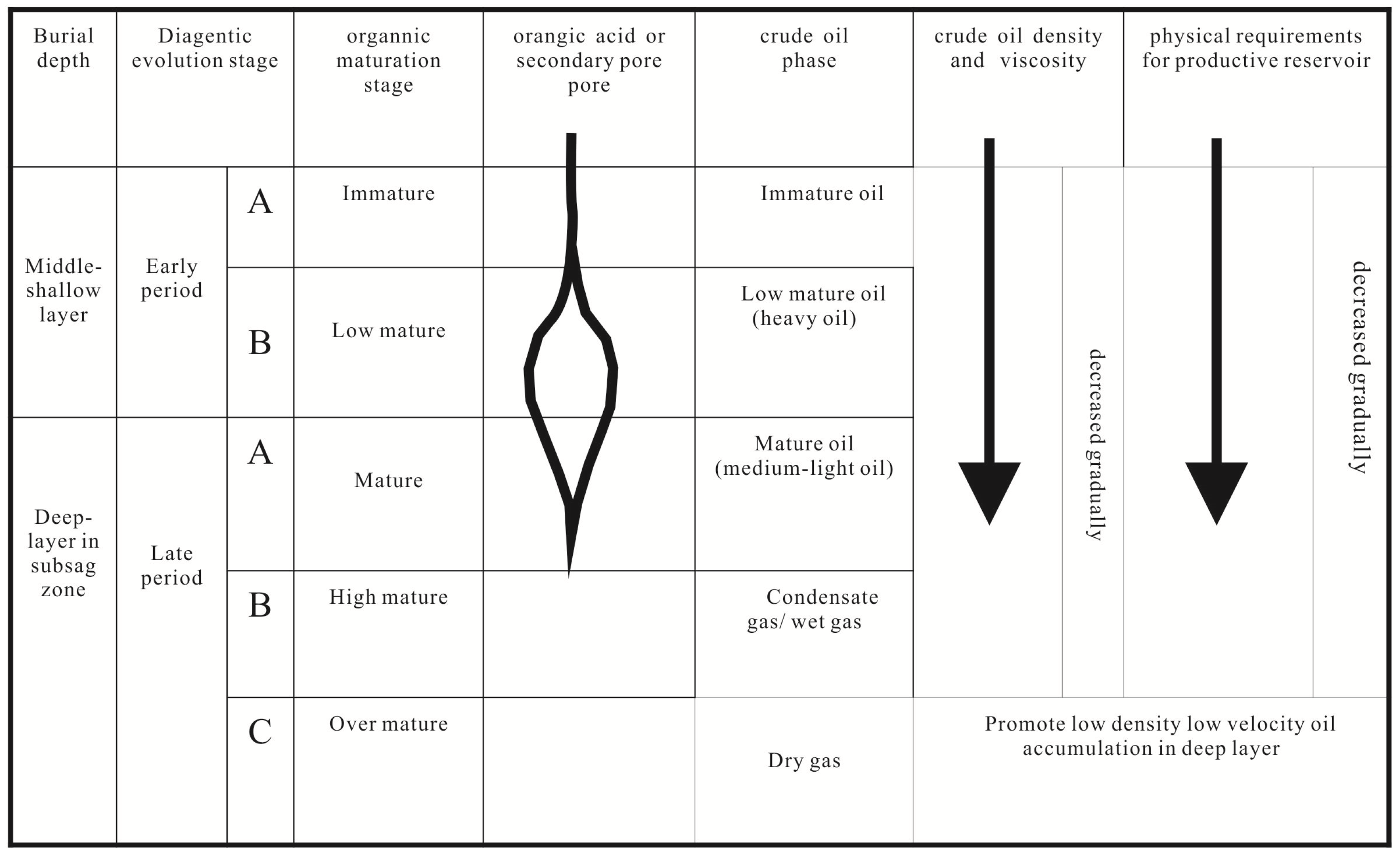
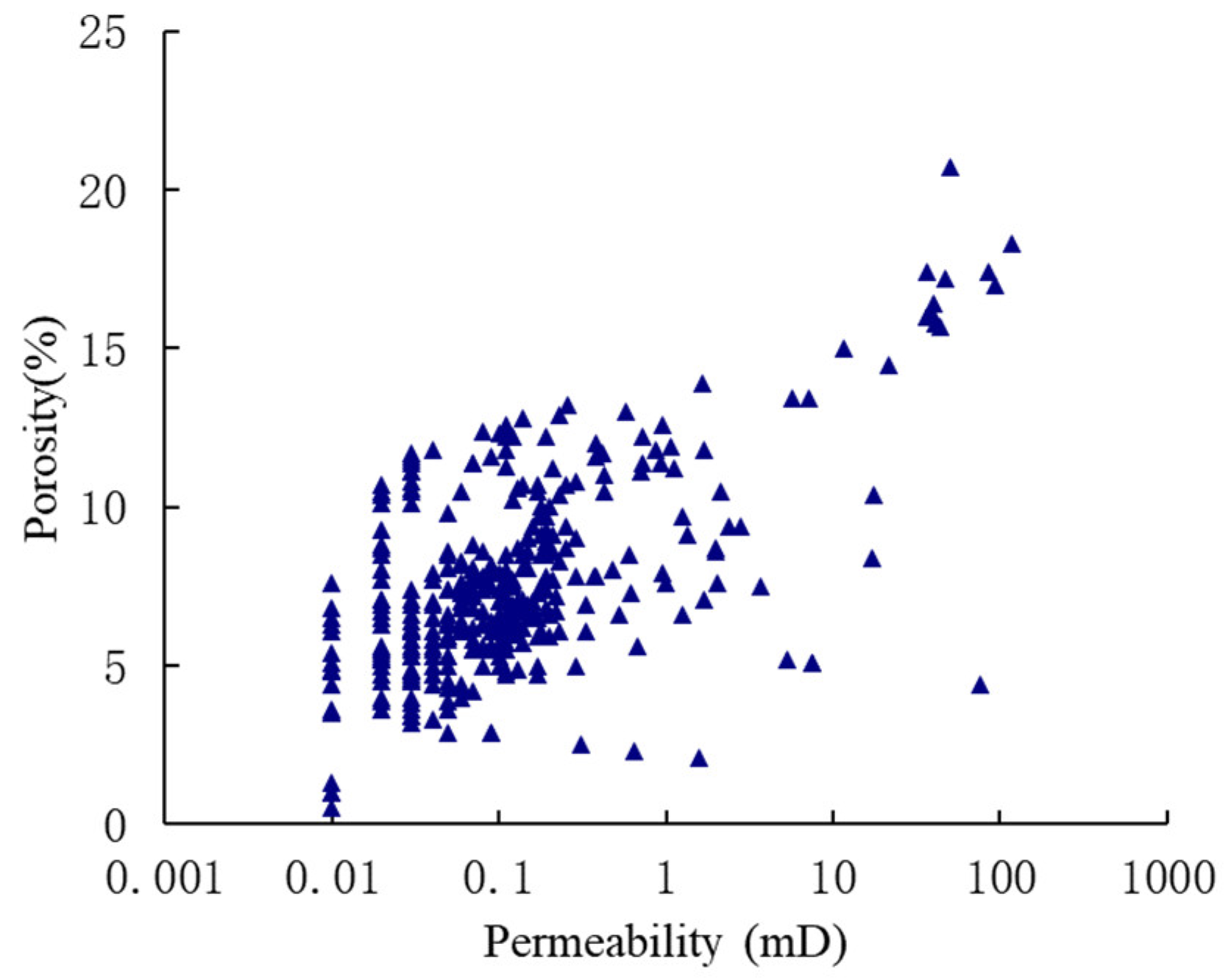

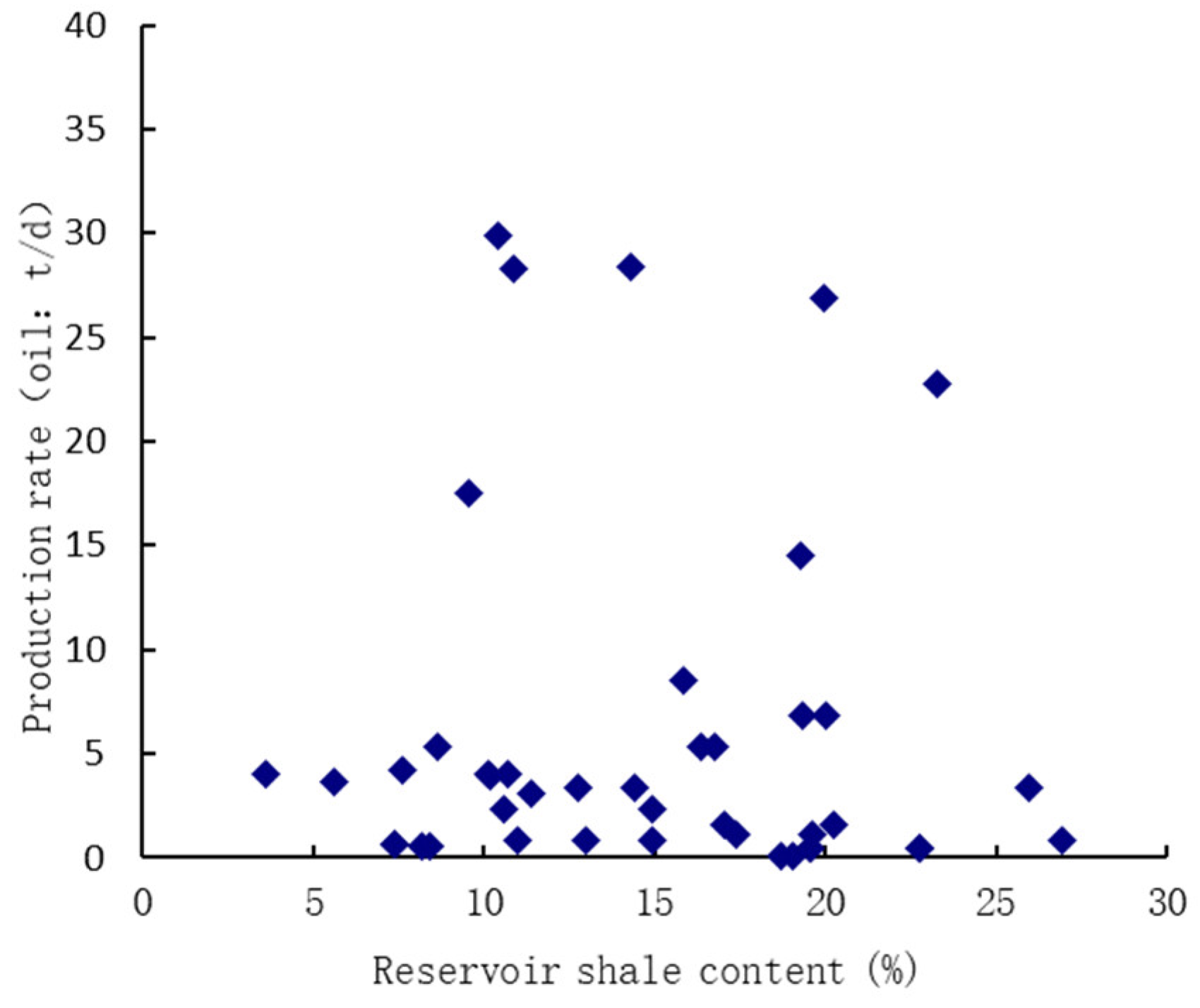
| Category | Mechanism of Action | |
|---|---|---|
| The Meaning of One | Fracture combination | Bonding effect; control effect; conducting effect; sealing effect |
| The Meaning of Three | Sandstone | Oil and gas enrichment; oil and gas migration; effective source rock |
| Effective source rock | Oil and gas accumulation; oil and gas migration | |
| Effective reservoir | Oil and gas storage | |
| Block | Structural Type | Oil-Bearing Area | Number of Wells | Reservoir Thickness | Reservoir Lithology | Sedimentary Facies | Hydrocarbon Filling Degree |
|---|---|---|---|---|---|---|---|
| km2 | m | % | |||||
| XX1 | Lithologic reservoir | 7.33 | 4 | 30 | Glutenite, siltstone | Nearshore subaqueous middle-fan | 24.43 |
| XX2 | Lithologic reservoir | 2.32 | 3 | 96 | Siltstone, grit stone, glutenite | Nearshore subaqueous middle-fan | 2.42 |
| XX3 | Lithologic reservoir | 3.12 | 2 | 200 | Fine sandstone, siltstone, glutenite | Nearshore subaqueous middle-fan | 1.56 |
| XX4 | Lithologic reservoir | 1.09 | 1 | 15 | Fine sandstone, siltstone | Nearshore subaqueous outer-fan | 7.27 |
| XX5 | Lithologic reservoir | 3.32 | 3 | 80 | Siltstone, fine sandstone | Nearshore subaqueous middle-fan | 4.15 |
| XX6 | Structural–lithologic reservoir | 1.32 | 1 | 400 | Glutenite, fine sandstone | Nearshore subaqueous middle-fan | 0.30 |
| XX7 | Structural–lithologic reservoir | 7.26 | 6 | 60 | Fine sandstone | Nearshore subaqueous middle-fan | 9.44 |
| XX8 | Structural–lithologic reservoir | 4.72 | 5 | 50 | Siltstone | Nearshore subaqueous outer-fan | 7.59 |
| XX9 | Structural–lithologic reservoir | 11.38 | 10 | 150 | Glutenite, fine sandstone | Nearshore subaqueous middle-fan | 3.92 |
| XX10 | Structural–lithologic reservoir | 0.98 | 1 | 25 | Glutenite, fine sandstone | Nearshore subaqueous inner/middle-fan | 1.50 |
| XX11 | Structural–lithologic reservoir | 0.60 | 1 | 40 | Siltstone | Nearshore subaqueous outer-fan | 2.76 |
| XX12 | Structural–lithologic reservoir | 1.93 | 1 | 70 | Fine sandstone | Distal subaqueous fan | 3.97 |
| XX13 | Structural–lithologic reservoir | 3.97 | 21 | 100 | Siltstone, fine sandstone | Distal subaqueous fan | 1.33 |
| XX14 | Structural–lithologic reservoir | 0.60 | 1 | 45 | Fine sandstone, glutenite | Nearshore subaqueous middle-fan | 0.33 |
Disclaimer/Publisher’s Note: The statements, opinions and data contained in all publications are solely those of the individual author(s) and contributor(s) and not of MDPI and/or the editor(s). MDPI and/or the editor(s) disclaim responsibility for any injury to people or property resulting from any ideas, methods, instructions or products referred to in the content. |
© 2023 by the authors. Licensee MDPI, Basel, Switzerland. This article is an open access article distributed under the terms and conditions of the Creative Commons Attribution (CC BY) license (https://creativecommons.org/licenses/by/4.0/).
Share and Cite
Liu, S.; Zhao, S.; Yang, X.; Zhang, J.; Yin, M.; Meng, Q.; Li, B.; Xia, Z. “Tri-in-One” Accumulation Model of Lithologic Reservoirs in Continental Downfaulted Basins: A Case Study of the Lithologic Reservoir of Nantun Formation in Tanan Sag, Mongolia. Processes 2023, 11, 2352. https://doi.org/10.3390/pr11082352
Liu S, Zhao S, Yang X, Zhang J, Yin M, Meng Q, Li B, Xia Z. “Tri-in-One” Accumulation Model of Lithologic Reservoirs in Continental Downfaulted Basins: A Case Study of the Lithologic Reservoir of Nantun Formation in Tanan Sag, Mongolia. Processes. 2023; 11(8):2352. https://doi.org/10.3390/pr11082352
Chicago/Turabian StyleLiu, Shaojun, Shengxian Zhao, Xuefeng Yang, Jian Zhang, Meixuan Yin, Qi’an Meng, Bo Li, and Ziqiang Xia. 2023. "“Tri-in-One” Accumulation Model of Lithologic Reservoirs in Continental Downfaulted Basins: A Case Study of the Lithologic Reservoir of Nantun Formation in Tanan Sag, Mongolia" Processes 11, no. 8: 2352. https://doi.org/10.3390/pr11082352
APA StyleLiu, S., Zhao, S., Yang, X., Zhang, J., Yin, M., Meng, Q., Li, B., & Xia, Z. (2023). “Tri-in-One” Accumulation Model of Lithologic Reservoirs in Continental Downfaulted Basins: A Case Study of the Lithologic Reservoir of Nantun Formation in Tanan Sag, Mongolia. Processes, 11(8), 2352. https://doi.org/10.3390/pr11082352





